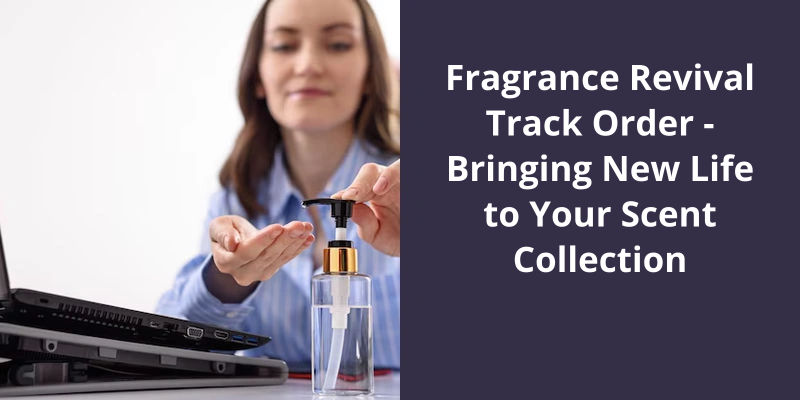A humectant is a substance that attracts moisture from the environment and helps retain it, making it an essential ingredient in skincare products. PEGs, with their ability to penetrate the skin's surface and attract moisture to it, have proven to be effective humectants. While the use of PEGs as humectants has been widely documented, questions about it’s safety and potential side effects have also been raised. Thus, it’s essential to understand the properties of PEGs and their derivatives to make informed decisions about their use in cosmetics.

Is Propylene Glycol a Humectant or Emollient?
Humectants are widely used in cosmetic and personal care products to help prevent moisture loss and improve hydration. Propylene glycol’s hydrophilic nature makes it an effective humectant that can help attract and retain moisture in the skin.
Moreover, propylene glycol is also an effective emollient. Emollients are substances that help soften and smoothen the skin by filling the gaps between the epidermal cells. This helps to improve the texture and appearance of the skin, making it look and feel smoother and more supple.
In addition to it’s humectant and emollient properties, propylene glycol is also used as a solvent, viscosity regulator, and preservative in many personal care products. It’s considered safe for use in cosmetics and personal care products by regulatory bodies such as the FDA and the European Union.
Despite it’s proven safety and effectiveness, some people have reported experiencing skin irritation or sensitization after using products containing propylene glycol. This may be due to individual sensitivity or a high concentration of propylene glycol in the product.
Comparison of Propylene Glycol With Other Commonly Used Humectants/Emollients, Such as Glycerin and Hyaluronic Acid
- Propylene glycol is a clear, colorless liquid with a slightly sweet taste.
- Glycerin, also known as glycerol, is a clear, odorless liquid with a sweet taste.
- Hyaluronic acid is a natural substance that’s found in the body, particularly in the skin, joints, and eyes.
- All three substances are commonly used as humectants and emollients in personal care products.
- Propylene glycol and glycerin are often used in moisturizers, soaps, and other skincare products to help the skin retain moisture.
- Hyaluronic acid is used in skincare products for it’s ability to hydrate and plump the skin.
- While all three substances have moisturizing properties, some people may be sensitive to propylene glycol or glycerin and prefer to use products that contain only hyaluronic acid.
- It’s important to patch test new skincare products to determine if they’re suitable for your skin type and to consult with a dermatologist if you’ve concerns or questions.
Humectants are a vital ingredient in many beauty products, providing hydration to the skin. Often used in moisturizers, serums, and masks, humectants have a unique ability to attract water molecules and keep skin hydrated. Some popular examples of humectants are glycerin, urea, hyaluronic acid, and salicylic acid. Additionally, alpha hydroxy acids (AHAs) such as glycolic acid and lactic acid, propylene glycol, honey, and sorbitol are also commonly used as humectants.
What Chemicals Are Often Used as Humectants?
Humectants are a type of substance that’s commonly found in various products like skincare and hair care to keep the skin and hair hydrated. These substances are known for their ability to attract and retain moisture from the environment, ultimately preventing dehydration of the skin or hair. Among the popular chemicals used as humectants, glycerin is one of the most commonly used. It’s a simple sugar alcohol that can be derived from natural sources like animal fats or vegetable oils. Glycerin is known for it’s excellent water-binding properties, which is why it’s one of the most popular humectants in the cosmetics and personal care industry.
Another commonly used humectant is urea, which is an organic compound that’s found naturally in the body. Urea is known for it’s ability to break down the bonds between dead skin cells, ultimately helping to soften and hydrate the skin. In addition, hyaluronic acid is another popular humectant that’s widely used in skincare products. It’s a natural substance that’s found in the body and is responsible for keeping our skin hydrated and plump. Hyaluronic acid is a powerful humectant that can hold up to 1000 times it’s weight in water, making it a popular choice for anti-aging skincare.
Salicylic acid is another popular humectant that’s often used to exfoliate and hydrate the skin. It’s a beta-hydroxy acid that’s derived from willow bark and is known for it’s anti-inflammatory and antibacterial properties. Alpha hydroxy acids, such as glycolic acid and lactic acid, are also commonly used as humectants due to their ability to improve the texture and appearance of the skin. They work by removing dead skin cells and stimulating the production of collagen, ultimately resulting in better hydration and plumpness.
Propylene glycol is a synthetic humectant that’s commonly used in various skincare and personal care products. It’s known for it’s ability to attract and retain moisture, ultimately hydrating and protecting the skin from environmental stressors. Honey and sorbitol are also popular humectants that are used in various products like moisturizers, shampoos, and conditioners. Honey is a natural humectant that’s derived from bees and is known for it’s antibacterial and anti-inflammatory properties. Sorbitol, on the other hand, is a sugar alcohol that’s primarily derived from corn and is used as an alternative to glycerin in various products.
They work by attracting and retaining moisture, ultimately keeping the skin and hair hydrated and healthy. While there are various chemicals used as humectants, some of the most commonly used ones include glycerin, urea, hyaluronic acid, salicylic acid, alpha hydroxy acids, propylene glycol, honey, and sorbitol. Ultimately, finding the right humectant for your skin and hair type is a matter of trial and error, but with so many options available, there’s something out there for everyone.
Now that we’ve a better understanding of what humectants are used for, let’s take a closer look at how they work and the benefits they can provide.
What Is an Example of a Humectant?
Another example of a humectant is urea, which is commonly used in moisturizers and lotions. Urea is a natural component of the skins NMF (natural moisturizing factor), which helps to keep the skin hydrated. When urea is applied topically, it increases the skins ability to hold onto water, preventing dehydration and promoting healthier, plumper-looking skin.
Another commonly used humectant is propylene glycol. This ingredient is used in everything from shampoo and conditioner to body lotions and facial moisturizers. When applied to the skin or hair, propylene glycol attracts water molecules, helping to keep these areas moisturized and healthy-looking.
Sodium PCA is another natural humectant that’s often used in personal care products. It occurs naturally in the skin and helps to maintain hydration levels and prevent moisture loss. When included in skincare and haircare products, sodium PCA can help to keep these areas more supple and hydrated, reducing the appearance of dryness and flakiness.
Sorbitol is another commonly used humectant that’s found in many personal care products, including gels, lotions, and creams. It attracts water molecules to the skin and hair, helping these areas to stay moisturized and healthy. Sorbitol also helps to improve the overall texture and feel of these areas, making them feel softer and smoother to the touch.
Overall, the use of humectants in personal care products is an important way to help keep the skin, hair, and nails hydrated and healthy-looking. Whether you choose hyaluronic acid, glycerin, urea, propylene glycol, sodium PCA, sorbitol, or another humectant, these ingredients can help to improve the overall health and appearance of these areas and keep them looking their best.
Humectants play a crucial role in the food industry, as they help prevent foods from drying out and maintain their moisture content. While sugar and salt are among the most common humectants, there are several other types used in food production. In this article, we’ll take a closer look at some common examples of humectants used in food manufacturing and explore how they work.
What Are Examples of Humectants in Food?
Humectants are chemical substances that are added to foods to help them retain their moisture. They’re widely found in processed foods, such as baked goods, confections, and canned foods. These substances are important because they help prevent food from drying out and becoming unpalatable. This is especially important in foods that are intended to have a long shelf life.
Sugar and salt are the oldest and most commonly used humectants in food. They’re used in many different types of food products, including baked goods, sauces, and condiments. Sugar and salt are great at binding water molecules together and keeping them within the food product. This helps prevent evaporation, which can lead to loss of moisture and spoilage.
Glycerin is another popular humectant that’s commonly used in food. It’s a natural substance that’s often derived from animal or vegetable fat. Glycerin is used in a wide range of food products, including candy, ice cream, baked goods, and beverages. It’s an effective humectant due to it’s ability to attract and hold water molecules within a food product.
Honey is also a popular humectant that’s often used in many different types of food products. It’s a natural sweetener that’s produced by bees from flower nectar. Honey is often used in baked goods, confections, and other sweet foods due to it’s natural sweetness and moistening properties. It’s particularly effective in helping to prevent crusts from becoming dry and brittle.
Sugar alcohols, such as sorbitol, erythritol, and xylitol, are also commonly used humectants in food. These substances are derived from sugars and are often used as low-calorie sweeteners in many different types of food products, including sugar-free candies, chewing gum, and beverages.
These substances are effective because they attract and hold water molecules within a food product, which helps prevent evaporation and spoilage.
Humectants are an essential ingredient in many skincare, haircare, and cosmetic products. These ingredients can help to moisturize and hydrate the skin and hair by attracting and retaining water. While there are many synthetic humectants available, natural sources are becoming increasingly popular due to the desire for more organic, sustainable products. In this article, we will explore eight natural humectants and their benefits for the skin and hair.
What Are the Natural Sources of Humectants?
Humectants are a popular ingredient in many skincare products as they help to hydrate and moisturize the skin. These substances work by attracting moisture from the air and then delivering it to the skin. While there are many synthetic humectants available, there are also many natural sources of humectants.
Aloe vera is another popular natural humectant. This plant is known for it’s soothing and hydrating properties and is commonly used to help soothe sunburns and other skin irritations. Aloe vera is also a popular ingredient in many skincare products due to it’s ability to help retain moisture in the skin.
Honey is a natural humectant that’s been used for thousands of years for it’s hydrating and healing properties. It’s known for it’s ability to help soothe and heal dry, cracked skin and can be found in a variety of skincare products, from cleansers to serums.
Panthenol is a natural humectant that’s derived from vitamin BPanthenol is often found in serums, moisturizers, and other skincare products.
Lactic acid is another natural humectant that’s known for it’s ability to help exfoliate and moisturize the skin. It’s commonly found in many skincare products, particularly those designed to help brighten and even out skin tone.
Finally, oat and cucumber are both natural humectants that are commonly used in skincare products. Oat is known for it’s soothing and anti-inflammatory properties, while cucumber is known for it’s ability to help hydrate and soothe the skin.
Whether you’re looking for a hydrating serum or a moisturizing lotion, there are plenty of natural humectants available that can help keep your skin healthy and hydrated.
Conclusion
Polyethylene glycol, in particular, has been shown to have strong humectant properties, making it a popular ingredient in many moisturizers and other skincare products. However, as with all cosmetic ingredients, it’s important to consult with a healthcare professional before using products containing polyethylene glycol to ensure they’re suitable for individual skin types and don’t cause any adverse reactions.





